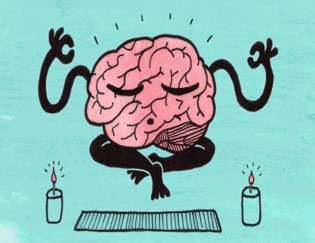Most people in their jobs will, at some stage, face a situation that may trigger a nervous reaction. Common examples can include:
- Workplace conflict e.g. conveying bad news to a colleague
- Public events or performances e.g. a presentation
- Self-belief or confidence e.g. imposter syndrome
Nerves or anxiety can reveal themselves in different ways in different people. You may recognise some of them:
- Upset tummy
- Constant worry
- Waves of fear
- Body tension – neck, shoulders, back
- Faster heart rate, shallow breathing
- Sweating
- Trouble sleeping or insomnia
- Difficulty concentrating
- Restlessness – fidgety, on edge
- Irritable – shouty or sharp with others
A shift in response
I help people to shift their ‘normal’ response when faced with a threatening situation. Rather than a threat, re-frame the event to a challenge; something to face up to rather than run away from. In ‘re-training the brain’ to respond differently, one is better able to meet the challenge. This shift in response is achieved using proven neuroscience techniques and is one area of coaching and development expertise here at Reach New Heights.
The right type of stress can be good for us
It’s worth noting that stress can be good for us – some people choose to seek it out voluntarily. For example:
- Theme park roller coaster
- Free fall parachuting
- Scary films
- Sitting through a World Cup penalty shoot-out
We experience the same stress indicators as in threatening situations, but we choose to ignore them. We stay and face the challenge. Being able to manage our stress response is key, remembering that good stress brings with it:
- Greater focus
- More commitment
- Increased energy
7 neuroscience brain hacks to regain calmness and confidence

- When the nervous feelings kick in. Greet them, remind them you are ‘safe,’ and they are not needed because e.g. ‘I am a [insert expertise]. I have brought value and great results in what I do.’ Speak/repeat this – out loud if possible.
- Power pose. Stand upright, strong and grounded for two minutes. Read about the benefits of this posture through the work and research of Amy Cuddy.
- Look in the mirror. Smile genuinely at yourself, if you like yourself, others will like you too. If you would do business with you – recognise this and smile with pride.
- Eye contact – helps people to feel part of the group. Helps people build trust and rapport. Shake hands with confidence and make eye contact.
- Music – if you have favourite music that creates warmth and joy memories – play it ahead of challenging situation.
- Breathe – Speak as you would write – Pause and breathe at every point of punctuation (stops, commas, semi-colons, exclamations, question marks). Helps people feel confident in you and to keep up with your words
- If a mistake happens (that others will notice) – acknowledge it with confidence – ‘I didn’t want that to happen (smile), (if you drop something) ‘that woke us all up!’
Next steps – Contact us.
This blog is not a teach yourself better responses to threatening situations. It is setting out scenarios that people may recognise and explaining that proven methods of brain re-training exist to create a different response by channelling natural chemicals in the body.
If you’re interested in finding out more and bringing a greater sense of achievement into your working life, feel free to contact me, I’d be delighted to discuss this subject, that I am passionate about, further.
